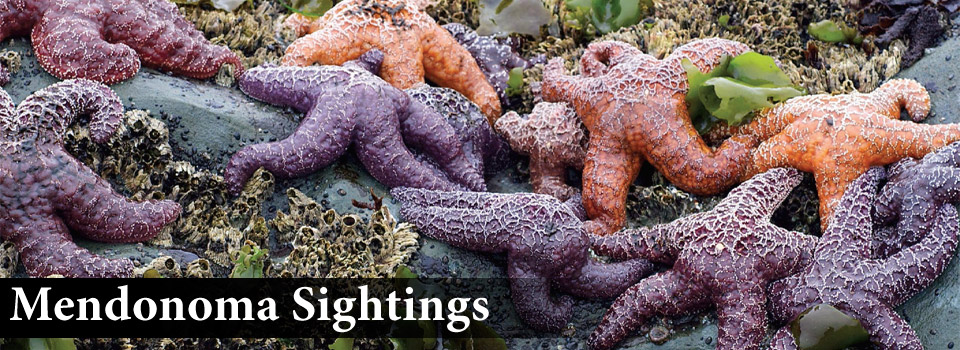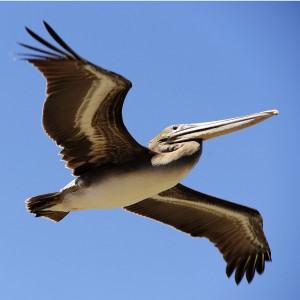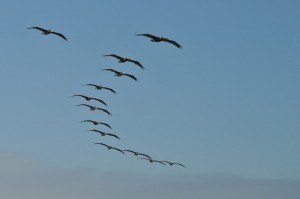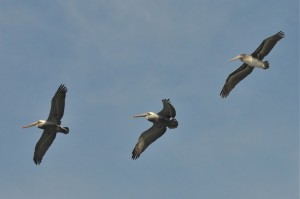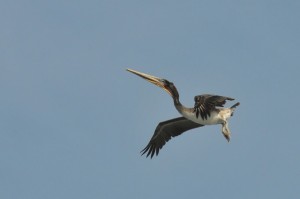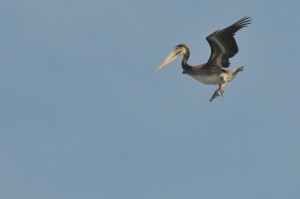Ken Bailey recently photographed a baby Brown Pelican. They are flying by the Coast in great numbers now. It seems there was a high birth rate this year. Some of the young Pelicans have been seen in unexpected places - most are tired and just need to rest. But some aren't going to survive. Rescue centers have been overwhelmed with young Brown Pelicans and will no longer take them. Here's what a baby Brown Pelican looks like:
They have a white belly, or underparts, and their head is brown. It is very distressing to see one starving as we cherish these birds that were almost made extinct by the pesticide DDT. But the fact is some don't survive and it proves out the motto of the survival of the fittest. Of course if something man-made is affecting them, like fishing line, you should try to help them.
Below is a photo Allen Vinson took of a squadron of Brown Pelicans. May the fish be plentiful and the winds favorable. They have a long journey to points north.
Thanks to Allen and Ken for allowing me to share their photos with you here. To see a photo comparing adult Brown Pelicans to a juvenile, here's the link: http://www.mendonomasightings.com/2011/12/05/three-wonderful-photos-of-juvenile-and-adult-brown-pelicans-by-coastal-photographer-allen-vinson/
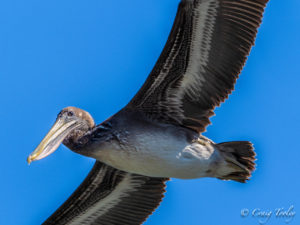 You can tell the young Brown Pelican from an adult because she has a brown head and white underparts. Adults have white heads and dark underparts. Now you can amaze your friends with that fun fact!
You can tell the young Brown Pelican from an adult because she has a brown head and white underparts. Adults have white heads and dark underparts. Now you can amaze your friends with that fun fact!